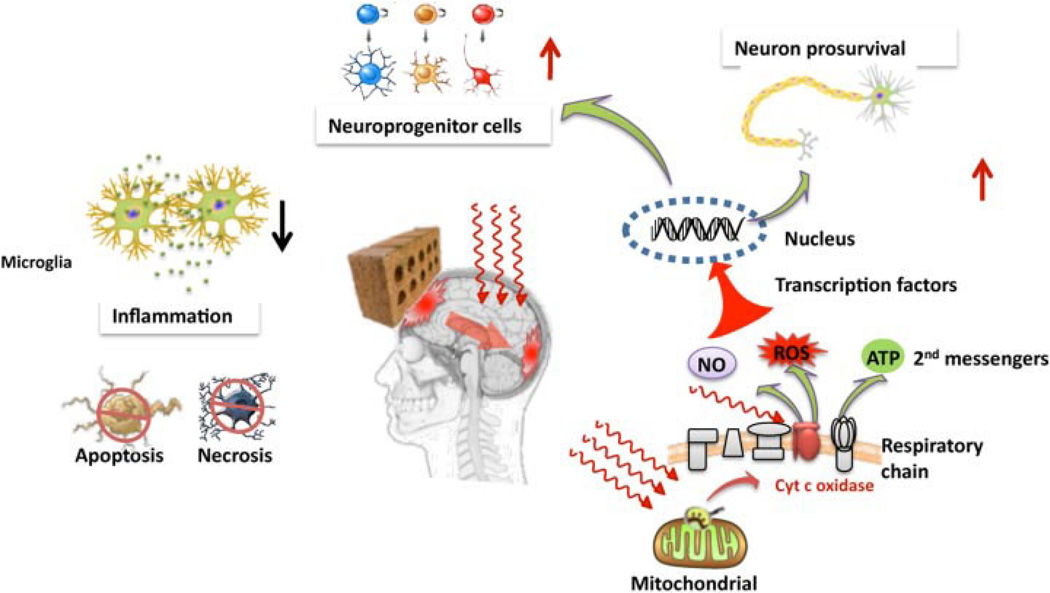Fig. 1.
Graphical illustration of the possible mechanisms of transcranial LLLT for TBI. Red or near-infrared light is absorbed in the mitochondria (possible by cyctochrome c oxidase in the respiratory chain) leading to release of ATP, nitric oxide, and modulation of reactive oxygen species. These second messenger molecules can lead to activation of transcription factors that migrate to the nucleus where they alter expression levels of numerous genes. These new gene products may lead to increased survival of neurons in the damaged brain, to an increase in adult neurogenesis in the hippocampus, for example, to reduced levels of inflammation and to an overall reduced level; of apoptotic and necrotic cell death in the brain.

